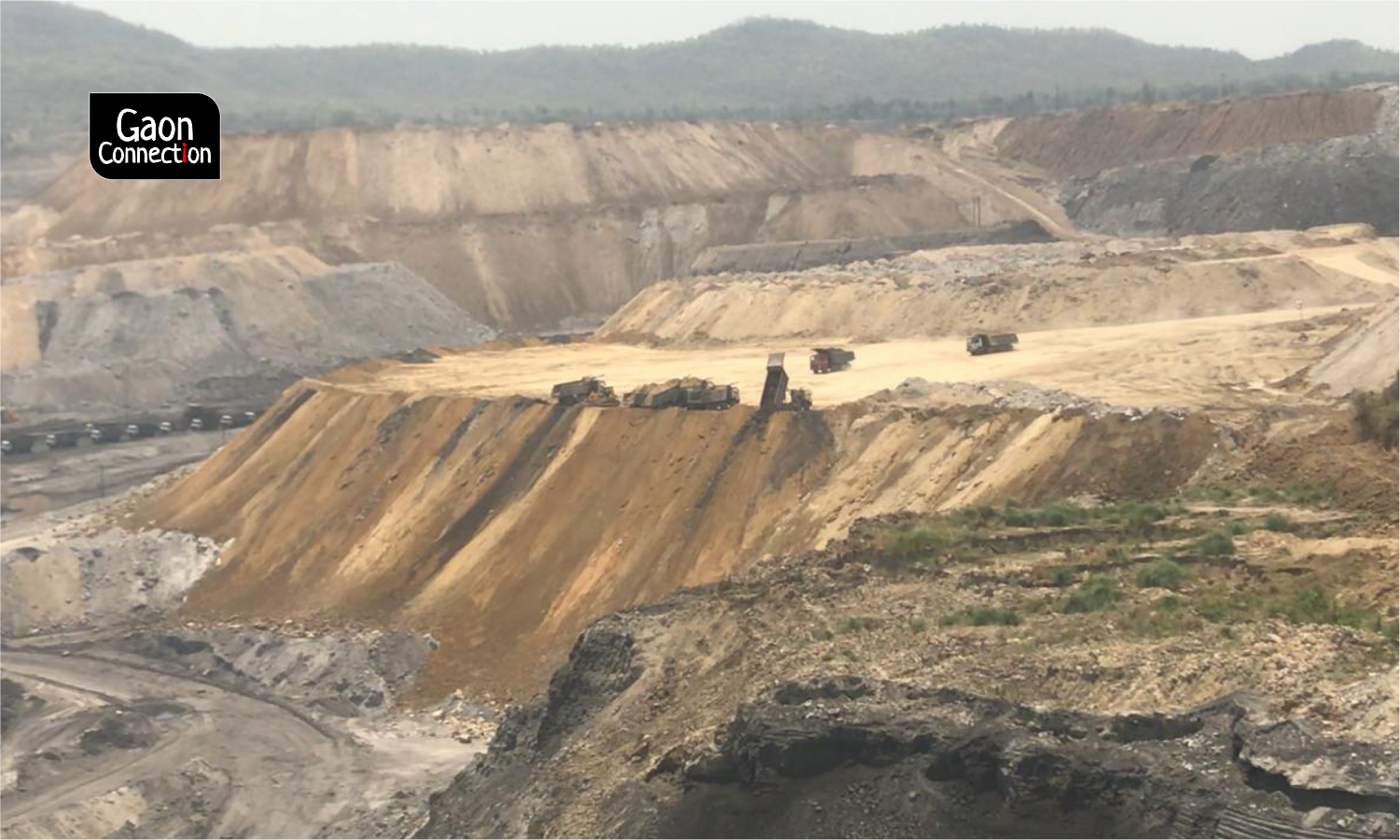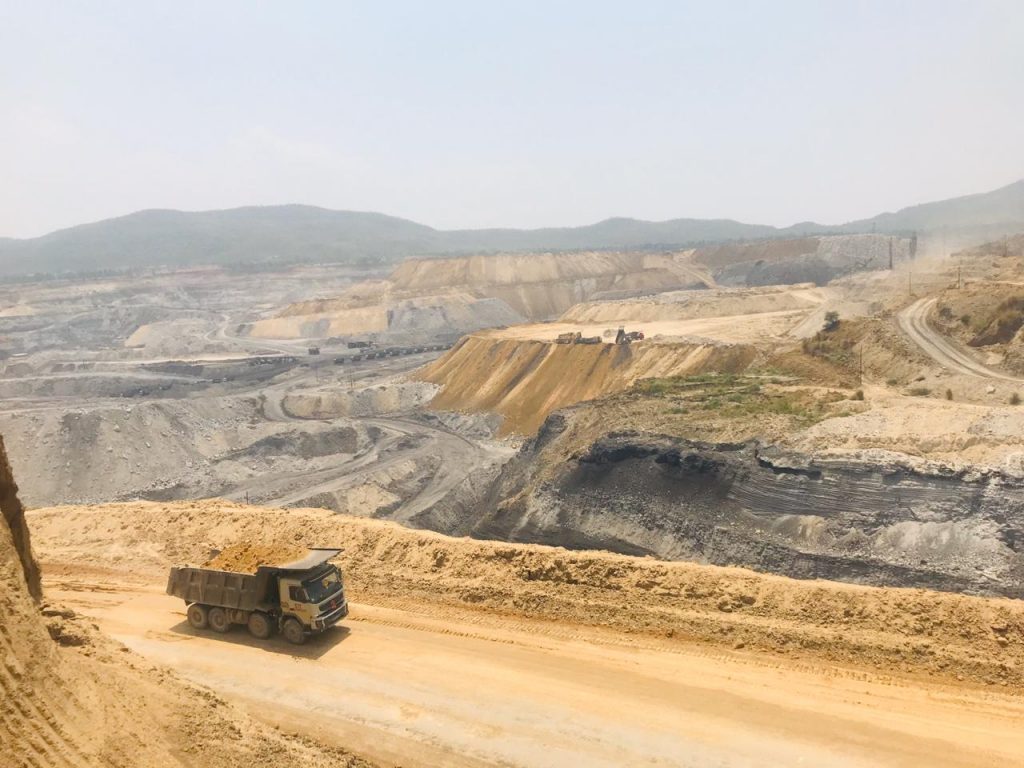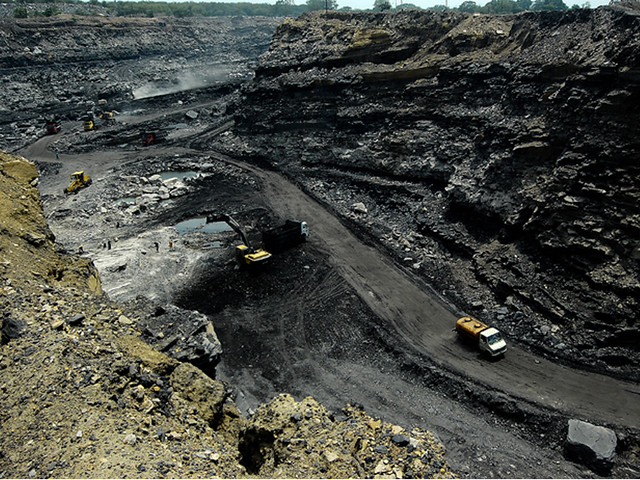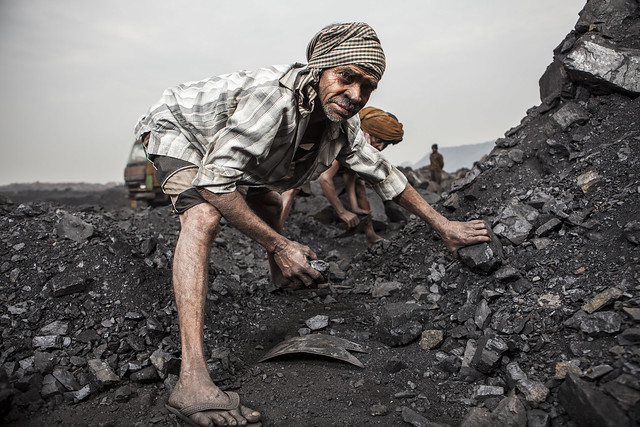Mine Games: Five contentious coal blocks in Chhattisgarh dropped from the auction list, but three objectionable mines added
Though five of the coal blocks in an environmentally sensitive area of Chhattisgarh, will not be auctioned anymore, the three others replacing them are in an equally controversial and an already highly polluted zone.


A coal mine in Godda, Jharkhand. Pic: Nidhi Jamwal
In June 2020, Prime Minister Narender Modi launched an auction for 41 coal blocks across Maharashtra, Jharkhand, Orissa, Madhya Pradesh and Chhattisgarh for commercial mining. Nine of those blocks lay in Chhattisgarh and the move by Modi was met with a surge of protest from its state government, local inhabitants and environmental activists. The outcry was because many of the mines lay in ecologically sensitive zones. The government of Chhattisgarh wrote to the Prime Minister, demanding the auction be revoked in these areas, some of which are India’s last remaining contiguous stretches of dense forest.
The nine mines included three from Hasdeo Arand that is spread over North Korba, South Sarguja and Surajpur districts (Hasdeo represents one of the largest coal reserves in India), two from Korba district and four from the Mand Raigarh block in Raigarh district.
Responding to the objections, on September 7, the Coal Ministry released a revised list of coal mines that excluded five blocks in the Hasdeo Arand area, and included three other mines namely, Dolesara, Jarekela and Jharpalam-Tangarghat in Raigarh district, bringing the total number of coal mines in the area to five. However, the move did nothing to placate the activists, as adding the three new mines did not in any way mitigate the fears of environmental damage.
And now a new report, released on September 16 by Manthan Adhyayan Kendra, has further fuelled fears in local inhabitants about the inclusion of three new coal blocks in the Raigarh district. The report titled ‘Commercial Coal Mining Auctions Legal, Social & Ecological concerns around inclusion of mines in Mand Raigarh of Chhattisgarh’, has pointed out that the three new inclusions lay in a district already “reeling from severe impacts of coal mining and thermal power generation.”
It has also expressed concern about the potential environmental devastation the addition of these three mines were going to have on people and forests of Chhattisgarh. Two other mines in Raigarh district, Gare Palma IV/1 and Gare Palma IV/7 coal blocks, that are on the auction block, are already under a cloud, points out the Manthan report.
Shripad Dharamadhikary, an environmental activist and the founder of Manthan Adhyayan Kendra questioned the need of the recent developments in Raigarh’s coal mining auctions under the Atma Nirbhar Abhiyan, an initiative of the central government to make India “self-sufficient”. “Self reliance for whom, and at what cost?,” he asked. He said that mining was always justified as a good prospect for the people, however the reality paints a different picture.

Raigarh, already a toxic hotspot
Raigarh in Chhattisgarh is already a toxic hotspot polluted due to the existing coal mines. Nine of every ten people living near its coal mines have reported illness including respiratory ailments, dry cough, loss of hair, and conditions affecting bones, muscles and skin, as reported in a 2017 study conducted by medical and environmental professionals in partnership with People First Collective India, an environmental forum, and the Adivasi Dalit Mazdoor Sangathan.
“The Raigarh district is a highly polluted one where there has been a severe impact on people’s health. The land grab has also taken away the means of livelihood of farmers there,” Alok Shukla, social activist and convener of Chhattisgarh Bachao Andolan, told Gaon Connection.
According to Dharmadhikary, not just farmers, local tribal inhabitants who depend on the forests for sustenance are also severely impacted due to the existing mining activities. “While losing their source of sustenance is bad enough, what makes it worse is the lack of proper rehabilitation of the affected people,” he pointed out. In addition to that is the very real threat to life and health. “The dark particulate matters and emissions that come with coal mining activities, have a serious impact on air, water and air,” he warned.
A 2017 study, ‘Poisoned – Report on the Environmental Sampling around the Coal Mines, Thermal Power Plants and Ash Ponds in Tamnar Block of Raigarh, Chhattisgarh’, found the very fine particulate matter in the filtered air sample (PM2.5) exceeded the 24-hour WHO (World Health Organization) standard and the Union ministry of environment and forests standard by 2.8 times. The high levels of PM2.5 in the sample, according to US EPA (United States Environmental Protection Agency) standards, would have led them to issue an advisory for very unhealthy air quality.
This study also found a high concentration of toxic heavy metals in air, water and soil samples of Tamnar, Raigarh district.

According to the 2017 report, water in the area also contained toxic heavy metals such as aluminium, arsenic, boron, cadmium, chromium, manganese and selenium. The total dissolved solids, commonly known as TDS, in water were above the Indian drinking water standards, the WHO recommendations, and the standards of the Canadian Council of the Ministers for the Environment guidelines. These indicated a threat to aquatic life in the water bodies of the region.
And, it is in such a polluted zone that the Union ministry has allotted three additional coal mines for auction.
Green vs greed
According to Dharamadhikary, auctioning Gare Palma coal blocks blatantly flouted the directives of the National Green Tribunal (NGT) and was likely to pose serious legal challenges in the future.
The NGT had instituted a committee to look into the ecological damages caused in Raigarh district, due to coal mining and power generation, specifically at the Gare IV/2 and IV/3 mines operated by Jindal Steel and Power Ltd, and latter by South Eastern Coalfield Ltd. The committee presented NGT with scathing observations regarding the adverse effects of coal mining and thermal power plants on the health of the people and natural ecosystems, reads the Manthan’s recent report.
In March, 2020 accepting the recommendations of the committee, NGT fined the companies 1.6 billion rupees to compensate for the ecological damages and directed that any further expansion or new projects “should be allowed after thorough evaluation only and mechanism for remedial measures should be in place, including oversight of measures for health mitigation.”
It is significant, pointed out Dharamadhikary, that the Dolesara, Jarekela and Jharpalam-Tangarghat mines that were added to the auction list in September, fall in the same region.
“It is a commercial mining policy nexus that fills the pockets of the corporates instead of benefiting the local inhabitants,” alleged Shukla. While local pressure and the state government’s intervention had stopped the coal block auction in Hasdeo, he questioned the inclusion of the three new coal blocks that were now to come under the hammer.

Mining Bill 2020
Meanwhile, the Mineral Laws (Amendment) Bill, 2020, passed in March this year, has also become a bone of contention. It amends the Mines and Minerals (Development and Regulation) Act, 1957; and the Coal Mines (Special Provisions) Act, 2015. The proposed amendments in this legislation are directed at incentivising private sector participation in mining by introducing a series of regulatory subsidies.
Amongst other things the amendment seeks to change the definition of ‘illegal mining’ which will result in condoning many instances where mining companies have extracted minerals beyond their approved capacity. If such extraction is from an existing mine lease area, they will not be considered as illegal.
Excessive extraction has also caused huge social and environmental impacts in mining areas as over extraction has meant increased transportation burden in areas where the road and rail networks have not been geared up for it. The result is heightened pollution and accidents.
The Chief Minister of Jharkhand, Hemant Soren, who represents a state with heavy mining activities and a large tribal population, has raised several substantive and procedural objections to the mining bill. Among other things, he has rejected the definition of ‘illegal mining’ as proposed by the amendments.
Like Soren, environmentalists in Chhattisgarh fear the ‘definition’ amendment will result in condoning many instances where mining companies have extracted minerals beyond their approved capacity.
“If such extraction is from an existing mine lease area, they will not be considered illegal,” Kanchi Kohli, a researcher with Center for Policy Research, New Delhi, told Gaon Connection. “Excessive extraction has caused huge social and environmental impacts in mining areas and has meant increased transportation burden in areas where the road and rail networks have not been geared up for it. The result is heightened pollution and accidents,” she added.
Also, contrary to the central government’s assurances of good times ahead, commercial mining may not necessarily mean advantages to the local communities, she said. “While land acquisitions and regulatory approvals will be pushed through, there is a huge risk of mining operations not taking off for years given the economic recession,” she warned.
In the meanwhile, people would lose their livelihoods, industrial climate would be impacted and the environment would be put under further threat. “The one sided reforms will only encourage conflicts at all levels,” she said.
The bleak reality according to Dharmadhikary is that most of the money invested in mining operations in the state will go to the companies that manufacture heavy machinery and expensive equipment and not necessarily benefit the people. “It would provide employment only to a handful that could operate the equipment. If at all there is some trickle-down employment for others, the adverse effects of mining are far worse than any benefit they may get out of it, as they lose their land, livelihood and health, ” he concluded.

